
Buy Tickets!
[divider_flat] [box style=”rounded” border=”full”]City-Scapes examines the pulsing urban environment in which we live, work, and play. Its surroundings surely shape us as they frame our perspectives. This concert celebrates the culture, history and mythology of the places many of us call home, presenting the World Premiere of ChiScape alongside other works inspired by the urban experience.
Explore the tabs below to learn more about the Mei-Ann Chen, the composers and their inspirations.[/box] [twocol_one]
Mei-Ann Chen, Music Director and conductor
 City-Scapes continues Mei-Ann Chen’s second season as Chicago Sinfonietta Music Director. In her short time with the orchestra, she has earned two awards from the League of American Orchestra: The Helen M. Thompson Award, given to a music director every two years to recognize their impact and potential for a significant national career, and one for the orchestra, a First Place Award for Adventurous Programming.
City-Scapes continues Mei-Ann Chen’s second season as Chicago Sinfonietta Music Director. In her short time with the orchestra, she has earned two awards from the League of American Orchestra: The Helen M. Thompson Award, given to a music director every two years to recognize their impact and potential for a significant national career, and one for the orchestra, a First Place Award for Adventurous Programming.
As the Chicago Tribune’s John von Rhien has remarked, “Mei-Ann Chen… was born to lead this group. She plays and speaks from the heart, the body and the head, and the audience and players have embraced her.”
Born in Taiwan, Ms. Chen has lived in the United States since 1989. She holds a Doctor of Musical Arts degree in conducting from the University of Michigan, where she was a student of Kenneth Kiesler. Prior to that, she was the first student in New England Conservatory’s history to receive master’s degrees, simultaneously, in both violin and conducting. She is also the Music Director of the Memphis Symphony Orchestra and is in high demand around the globe as a guest conductor.
Mei-Ann Chen’s complete biography can be found here.
[/twocol_one] [twocol_one_last]
Mei-Ann previews the concert in this video clip.
The centerpiece of City-Scapes is a newly created work, ChiScape, by four rising young composers. The Chicago Architecture Foundation, co-presenter of City-Scapes, selected a pool of twenty iconic Chicago buildings that define the city’s landscape and heritage. The composers were then commissioned by the Chicago Sinfonietta to write a new work inspired by a building chosen from this pool. Each composition became a movement of ChiScape under the guidance of Pulitzer Prize-winning composer Jennifer Higdon.
The Chicago Sinfonietta and the Chicago Architecture Foundation are proud to present the World Premiere of ChiScape. [/box] [/twocol_one_last]
Armando Bayolo
Movement I: A Shelter that Filters the Sun
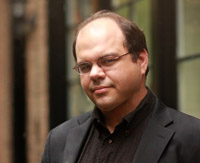 Born in 1973 in Santurce, Puerto Rico to Cuban parents, composer Armando Bayolo began musical studies at the age of twelve. At sixteen he went on to study at the prestigious InterlochenArtsAcademy in Interlochen, Michigan, where he first began the serious study of composition.
Born in 1973 in Santurce, Puerto Rico to Cuban parents, composer Armando Bayolo began musical studies at the age of twelve. At sixteen he went on to study at the prestigious InterlochenArtsAcademy in Interlochen, Michigan, where he first began the serious study of composition.
Bayolo selected the Modern Wing of the Art Institute of Chicago, designed by Renzo Piano, and titled his opening movement A Shelter that Filters the Sun. He was especially taken by what the architect called his roof design, a “magic carpet.” Bayolo calls his contribution a “light, effervescent piece that attempts to suggest not just the lightness of Piano’s design, but the sense of communal celebration” that the Art Institute represents.
For further information, visit www.armandobayolo.com. Audio samples of many Bayolo compositions are at www.reverbnation.com/armandobayolo/song

Modern Wing of the Art Institute of Chicago
Vivian Fung
Movement II: Aqua
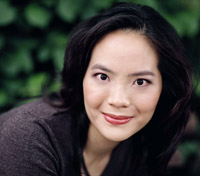 With music described as “evocative” by The New York Times, Canadian-born Vivian Fung has distinguished herself as a composer with a powerful compositional voice, whose music often merges Western forms with non-Western influences such as Balinese and Javanese gamelan and folk songs from minority regions of China.
With music described as “evocative” by The New York Times, Canadian-born Vivian Fung has distinguished herself as a composer with a powerful compositional voice, whose music often merges Western forms with non-Western influences such as Balinese and Javanese gamelan and folk songs from minority regions of China.
Fung selected Aqua, the stunning wavy tower designed by Chicagoan Jeanne Gang. Fung says that she was inspired by the building’s juxtaposition of horizontal waves, rippling balconies, and vertical landscape of pools, hills and valleys. From this she fashioned a work of colorful textures and undulating harmonies that “disappear into the ether of the stratosphere.”
Visit www.vivianfung.net for more on the composer and her works, including news, reviews, and videos.
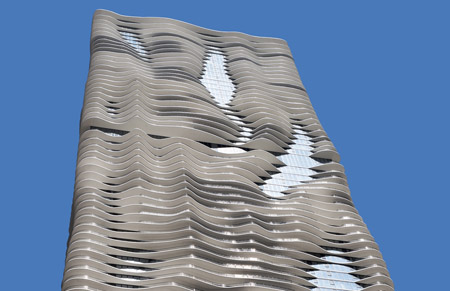
Aqua
Jonathan Bailey Holland
Movement III: Shards of Serenity
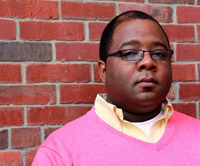 Jonathan Bailey Holland’s music has been commissioned and performed by the Alabama, Atlanta, Baltimore, Cleveland, Dallas, Detroit, Indianapolis, Memphis, Minnesota, National, Philadelphia, San Antonio, St. Louis, and South Bend Symphony Orchestras among many others.
Jonathan Bailey Holland’s music has been commissioned and performed by the Alabama, Atlanta, Baltimore, Cleveland, Dallas, Detroit, Indianapolis, Memphis, Minnesota, National, Philadelphia, San Antonio, St. Louis, and South Bend Symphony Orchestras among many others.
Holland’s movement, Shards of Serenity, reflects on Crown Hall, designed by the legendary Mies van der Rohe, and called “one of the world’s most influential, inspiring and astonishing structures” by Time magazine. Holland was drawn to the sense of serenity experienced both inside and outside as natural light streams from all directions during the day. It’s open, wall less interior inspired a Zen-like sense of being in the present, not wondering what lies around a corner that isn’t there.
Find audio, a complete bio, and lots more at www.jonathanbaileyholland.com
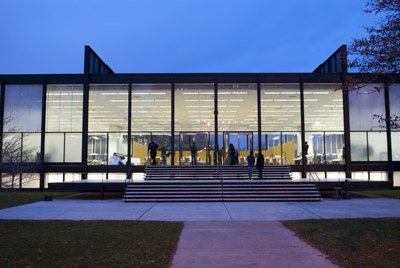
Crown Hall
Chris Rogerson
Movement IV: Open Air
 Chris Rogerson’s music has been praised for its “virtuosic exuberance” and “haunting beauty” (The New York Times). He has received commissions and performances from the Buffalo Philharmonic Orchestra, the Grand Rapids Symphony, the New World Symphony, the Cabrillo Festival Orchestra, the New York Youth Symphony, the Brentano Quartet, and the JACK Quartet.
Chris Rogerson’s music has been praised for its “virtuosic exuberance” and “haunting beauty” (The New York Times). He has received commissions and performances from the Buffalo Philharmonic Orchestra, the Grand Rapids Symphony, the New World Symphony, the Cabrillo Festival Orchestra, the New York Youth Symphony, the Brentano Quartet, and the JACK Quartet.
The final movement is inspired by a structure that, in all likelihood, had a direct impact on its soon to built neighbors: Frank Gehry’s Pritzker Pavilion. Called Open Air, Chris Rogerson’s piece salutes a rare achievement: A truly magnificent structure that belongs to the community, an artfully designed space that requires no cost of admission. To honor this vast and inviting public space, Rogerson conceived a “fanfare, full of majestic lines and chorales.”
Video, a complete bio, a list of works and more are at www.chrisrogerson.com

Pritzker Pavilion
Johann Strauss
Tales from the Vienna Woods
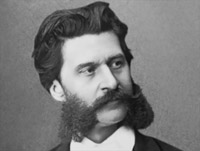 At first, you might think that including Johann Strauss’s Tales from the Vienna Woods in an urban-themed concert is an odd choice. It’s not as simple as that. Strauss, of course, is known as the ‘Waltz King’ for his music and the Viennese elegance that they conjure. Vienna Woods, too, is a waltz, and its premiere in 1868 reiterated the ascendancy that the dance had made from its humble village origins to become one of the pleasures of fashionable Viennese society. Strauss’s title harkens back to a simpler time, an almost mythical past, even as his patrons are the cream of urbane Viennese society.
At first, you might think that including Johann Strauss’s Tales from the Vienna Woods in an urban-themed concert is an odd choice. It’s not as simple as that. Strauss, of course, is known as the ‘Waltz King’ for his music and the Viennese elegance that they conjure. Vienna Woods, too, is a waltz, and its premiere in 1868 reiterated the ascendancy that the dance had made from its humble village origins to become one of the pleasures of fashionable Viennese society. Strauss’s title harkens back to a simpler time, an almost mythical past, even as his patrons are the cream of urbane Viennese society.
You can find a pretty complete profile of Strauss at the Classical Archives.
The video features a performance of the waltz by the Vienna Symphony Orchestra.
Michael Daugherty
Red Cape Tango from Metropolis Symphony
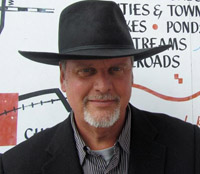 Superman is the ultimate migrant. Like Eastern Europeans and southern African-Americans early in the 20th Century, he made his way from a troubled homeland to a big city to make a new life. Grammy-winning composer Michael Daugherty’s compositions often take their names from places: Motor City Triptych, Lost Vegas, Sunset Strip, and Philadelphia Stories are just a few. Metropolis Symphony may not be inspired by a ‘real’ place, but it is easy to see how ‘Metropolis’ represents great urban centers like New York and Chicago. Red Cape Tango is the fifth and final movement of the work. The rhythm, introduced by the castanets and heard later in the finger cymbals, undergoes a gradual transformation, concluding dramatically with crash cymbals, brake drum, and timpani. The orchestra alternates between legato and staccato sections to suggest a musical bullfight, evoking the city as a place of struggle.
Superman is the ultimate migrant. Like Eastern Europeans and southern African-Americans early in the 20th Century, he made his way from a troubled homeland to a big city to make a new life. Grammy-winning composer Michael Daugherty’s compositions often take their names from places: Motor City Triptych, Lost Vegas, Sunset Strip, and Philadelphia Stories are just a few. Metropolis Symphony may not be inspired by a ‘real’ place, but it is easy to see how ‘Metropolis’ represents great urban centers like New York and Chicago. Red Cape Tango is the fifth and final movement of the work. The rhythm, introduced by the castanets and heard later in the finger cymbals, undergoes a gradual transformation, concluding dramatically with crash cymbals, brake drum, and timpani. The orchestra alternates between legato and staccato sections to suggest a musical bullfight, evoking the city as a place of struggle.
Michael Daugherty’s website has loads of information on the composer and his many works.
The video is the complete Red Cape Tango from the Grammy-winning Nashville Symphony recording of Metropolis Symphony.
Jennifer Higdon
river sings a song to trees from City Scape
 Pulitzer Prize-winning composer Jennifer Higdon has a strong connection to the Chicago Sinfonietta and Music Director Mei-Ann Chen. Her Blue Cathedral was among the works performed when Mei-Ann first conducted the orchestra in May 2011. Two years later, Higdon not only curated the premiere of ChiScape, but her own City Scape has lent its name to the entire concert. river sings a song to trees, the second section of the three movement work, is set in a real city, Atlanta. A kind of urbane/pastoral tone poem, its atmosphere is essentially lyrical, but the composer progressively ratchets up the tension to create a surprisingly rugged emotional landscape. All in all, it’s a picture of the city that’s surprisingly gritty despite the seemingly pastoral setting.
Pulitzer Prize-winning composer Jennifer Higdon has a strong connection to the Chicago Sinfonietta and Music Director Mei-Ann Chen. Her Blue Cathedral was among the works performed when Mei-Ann first conducted the orchestra in May 2011. Two years later, Higdon not only curated the premiere of ChiScape, but her own City Scape has lent its name to the entire concert. river sings a song to trees, the second section of the three movement work, is set in a real city, Atlanta. A kind of urbane/pastoral tone poem, its atmosphere is essentially lyrical, but the composer progressively ratchets up the tension to create a surprisingly rugged emotional landscape. All in all, it’s a picture of the city that’s surprisingly gritty despite the seemingly pastoral setting.
Jennifer Higdon’s website has a complete list of her works and recordings along with audio samples.
The video features a bit of Blue Cathedral played by the Atlanta Symphony Orchestra.
Edward K. “Duke” Ellington
Harlem
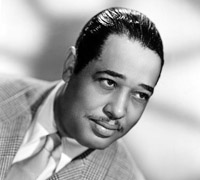 City-Scapes concludes in unabashedly celebratory fashion with Duke Ellington’s Harlem. Its jazz age swagger, full of blaring brass and rhythmic percussion, salutes the historic center of black intellectual life in New York City. Ellington, along with writers like Langston Hughes and Zora Neale Hurston, was a major figure of the Harlem Renaissance, and his work captures the energy of the time, as African-Americans, newly migrated to northern cities from the rural Jim Crow south, rejected stereotypes and proudly embraced artistic life in all its multifaceted glory. Chicago, where Bronzeville (sometimes called the Black Metropolis) flourished, benefited too from this Great Migration, returning us to the city that inspired ChiScape.
City-Scapes concludes in unabashedly celebratory fashion with Duke Ellington’s Harlem. Its jazz age swagger, full of blaring brass and rhythmic percussion, salutes the historic center of black intellectual life in New York City. Ellington, along with writers like Langston Hughes and Zora Neale Hurston, was a major figure of the Harlem Renaissance, and his work captures the energy of the time, as African-Americans, newly migrated to northern cities from the rural Jim Crow south, rejected stereotypes and proudly embraced artistic life in all its multifaceted glory. Chicago, where Bronzeville (sometimes called the Black Metropolis) flourished, benefited too from this Great Migration, returning us to the city that inspired ChiScape.
There is a very thorough biography and assessment of Ellington and his music at AllMusic.com.
The Sinfonietta will play the orchestral version of Harlem, arranged by Maurice Peress and Luther Henderson, at City-Scapes. The video has the music from Ellington’s big band version.
[box style=”rounded” border=”full”]Join Armando Bayolo, Vivian Fung, Jonathan Bailey Holland and Chris Rogerson as they talk about their new architecture-inspired compositions at Prelude, the Sinfonietta’s exclusive pre-concert discussion session. Saturday’s discussion at Wentz Concert Hall takes place at 7:00 pm on stage. Sunday’s conversation begins at 1:45 pm in the Grainger Ballroom of Symphony Center and will be moderated by Sun-Times and WFMT classical critic Andrew Patner.[/box]
